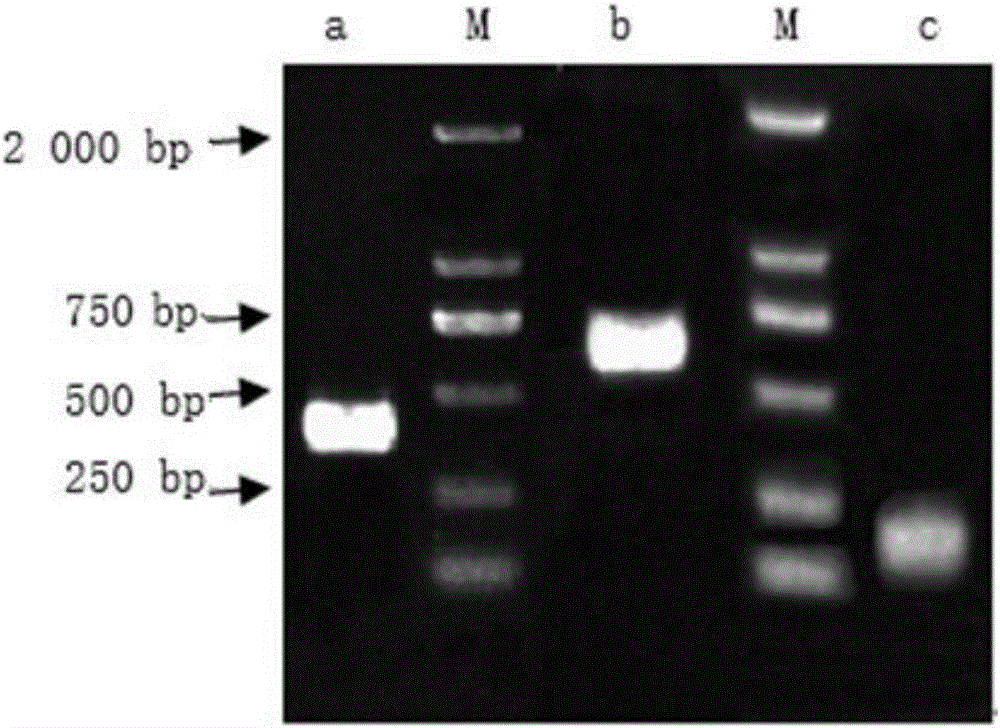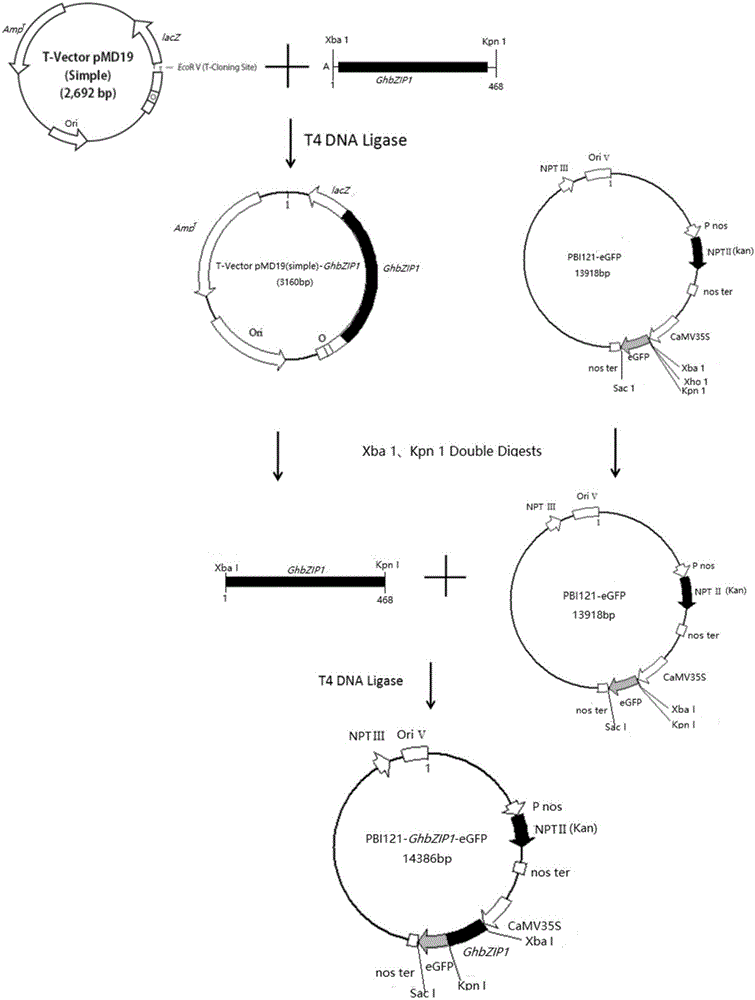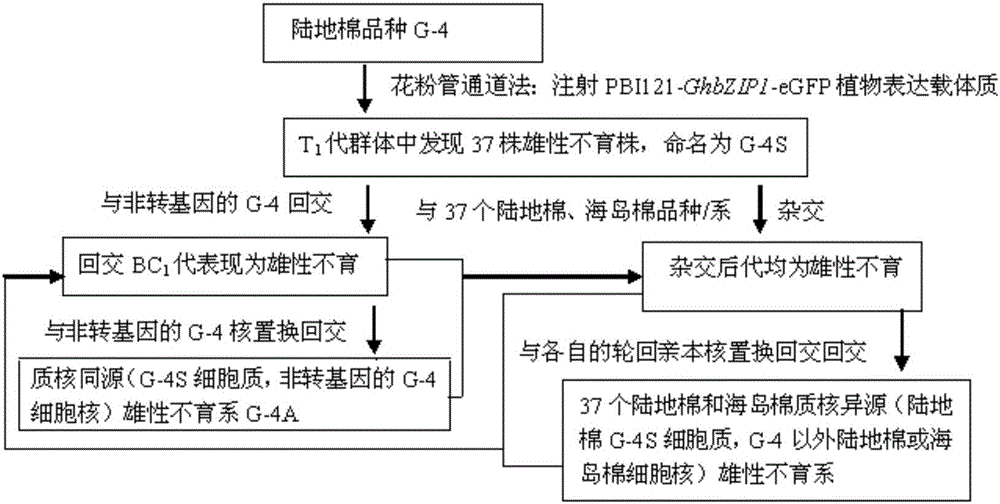Method for creating cytoplasmic male sterile line by utilizing cotton transgenosis
A male sterile line, male sterile technology, applied to other methods of inserting foreign genetic materials, genetic engineering, plant genetic improvement, etc.
- Summary
- Abstract
- Description
- Claims
- Application Information
AI Technical Summary
Problems solved by technology
Method used
Image
Examples
Embodiment 1
[0066] Example 1 Construction of Overexpression Vector PBI121-GhbZIP1-eGFP
[0067] 1. Cloning of GhbZIP1 gene cDNA
[0068] By analyzing the RNA-seq data of "cave A", and using this sequence as an intermediate fragment, specific primers were designed (primers were designed using Primer Premier 5.0 software), and the GhbZIP1 gene cDNA was cloned by combining RACE technology and hi-TAIL PCR technology full-length sequence.
[0069] Using RACE technology, synthesized reverse transcription primer AUAP (all primers are listed in Table 1), anchor primer AP, synthesized and amplified 5′ specific primers: SHP1 and SHP2, and adopted nested PCR and landing PCR technology, after two rounds of amplification to excavate The bands that meet the requirements were cloned, sequenced, and spliced with the intermediate fragments to obtain a sequence with a length of 194 bp, which was repeated 81 bases with the intermediate sequence of GhbZIP1, and the length of the newly added sequence was 1...
Embodiment 2
[0079] Breeding of Example 2 Cotton Cytoplasmic Male Sterile Line
[0080] In February 2013, at the base of China Cotton Research Institute in Yacheng, Hainan, G-4 (a hybrid of "Zhongmian 16" and "King Kong King" 5 The "Zhongmian 16" was selected from the Cotton Research Institute of the Chinese Academy of Agricultural Sciences, and the "King Kong King" was purchased from the Hubei Seed Company) as the material. The recombinant expression vector PBI121-GhbZIP1-eGFP constructed in Example 1 was injected into the ovary of the test material.
[0081] In July 2013, T sown in Nanning 1 Thirty-seven male sterile strains were found in the generation population, named G-4S. Molecular identification showed that the target gene existed in G-4S plants. So far, male sterile germplasm of cotton transgenic with GhbZIP1 gene has been obtained. Then, using the male sterile germplasm resource as the female parent, the wild-type non-transgenic G-4 and its non-homologous upland cotton variet...
PUM
 Login to View More
Login to View More Abstract
Description
Claims
Application Information
 Login to View More
Login to View More - R&D
- Intellectual Property
- Life Sciences
- Materials
- Tech Scout
- Unparalleled Data Quality
- Higher Quality Content
- 60% Fewer Hallucinations
Browse by: Latest US Patents, China's latest patents, Technical Efficacy Thesaurus, Application Domain, Technology Topic, Popular Technical Reports.
© 2025 PatSnap. All rights reserved.Legal|Privacy policy|Modern Slavery Act Transparency Statement|Sitemap|About US| Contact US: help@patsnap.com



